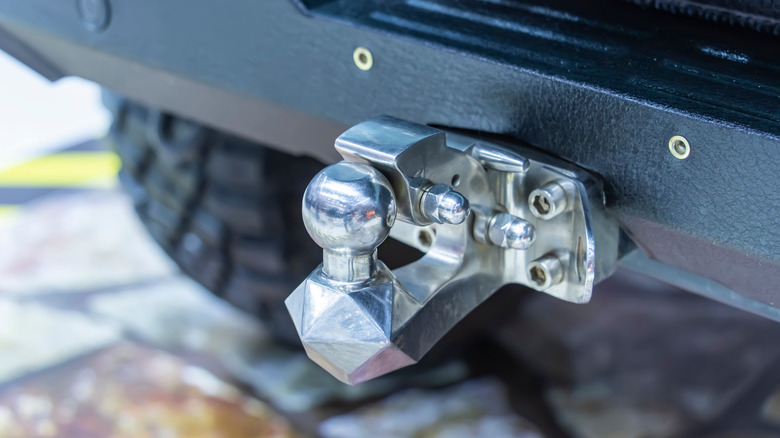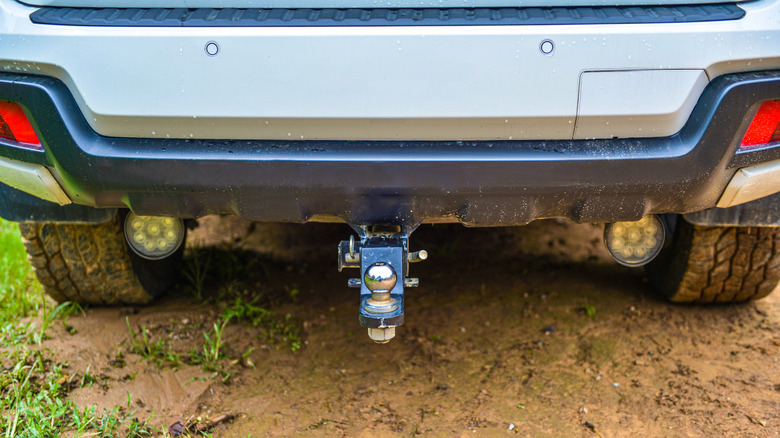How Much Weight Can You Tow With A Bumper Hitch?
When transporting large or heavy cargo, towing the load is safer and more practical than overloading a vehicle. Towing is a better alternative than trying to fit or load too much cargo, as it minimizes the risk of damaging the vehicle or causing accidents since it facilitates the transportation of bigger, heavier objects that won't fit inside a vehicle. Towing requires installing a device called a tow or trailer hitch to attach a trailer or carrier. There are several kinds of tow hitches, and different hitch class ratings vary based on their towing and load capacity. One of the simplest is called a bumper hitch, and its towing capacity can be based on the bumper tow rating or a standard capacity of up to 2,000 pounds.
A bumper hitch is a simple hitch that uses a safety chain attachment together with a ball mount receiver. It is attached behind the rear bumper of a vehicle, and is designed for light-duty towing. For towing heavier loads, a bumper hitch can increase its towing capacity, up to 6,000 pounds, if used in tandem with a weight distribution system that uses the axles of the tow vehicle and the trailer to evenly disperse the weight of the load.
Despite being rated for light towing work, there are several advantages of a bumper hitch. Its versatility allows it to be used with other tow attachments, which facilitates other ways that a tow hitch can be used. It can be easily installed without specialized tools and equipment, it can be installed on stock bumpers of trucks or SUVs with no structural modifications needed, and it is relatively low-cost compared to other hitch types.
The right capacity matters with a tow hitch
Aside from the bumper hitch, other kinds of hitches include the receiver hitch, which are welded square tubes attached to the vehicle frame. The fifth-wheel hitch, which uses locking jaws to secure the trailer's kingpin, is used for towing fifth-wheel trailers such as RVs. Next is the gooseneck hitch, which uses a ball and coupler connection and is installed on the bed of a pickup truck. Hitches like these with a tow ball require regular lubrication to ensure good performance. Last is the pintle hitch, which uses a hook and ring mechanism to connect to a trailer, and is mostly used in military, agricultural, and industrial applications.
In addition to the various types, hitches are also categorized based on towing capacity. Class I is made for light duty with a 2,000-pound capacity. Class II has a slightly bigger towing capacity of 3,500 pounds. Class III has a towing capacity of 5,000 pounds, sufficient to pull medium-sized RVs. Finally, Class IV has a 10,000-pound capacity, while Class V is capable of a massive 17,000 pounds, more than the weight of a full-grown elephant or three Tesla Model Xs.
While not necessarily a must-have, a tow hitch on a vehicle can be beneficial by giving it more functionality. A hitch allows the vehicle to tow different kinds of trailers or carriers for outdoor or commercial use. When installing a tow hitch, it is best to check which type is best for the vehicle and to bear in mind that a new car shouldn't be used for towing, to avoid potentially causing damage to its engine or transmission.

